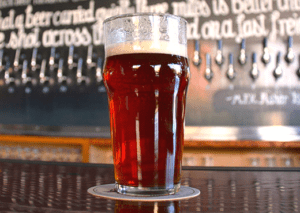 If you attended the National Homebrewers Conference in Grand Rapids, you may have heard that the Beer Judge Certification Program has been hard at work updating the BJCP Style Guidelines. Gordon Strong, President of the Beer Judge Certification Program, gave a presentation about the proposed changes to the BJCP Style Guidelines at the conference. Chip Walton of the video blog Chop & Brew recorded Gordon’s talk. I’ve transcribed some of the main changes below.
If you attended the National Homebrewers Conference in Grand Rapids, you may have heard that the Beer Judge Certification Program has been hard at work updating the BJCP Style Guidelines. Gordon Strong, President of the Beer Judge Certification Program, gave a presentation about the proposed changes to the BJCP Style Guidelines at the conference. Chip Walton of the video blog Chop & Brew recorded Gordon’s talk. I’ve transcribed some of the main changes below.
Want to learn more about the BJCP? Read Become a Beer Judge! by Jason McLaughlin.
First, why change the style guidelines?
- The last update to the guidelines was in 2008, with the last styles added way back in 2004. Brewing has changed a lot in the past 10 years – it’s time for an update!
- To embrace the growing number of international homebrewers – the current guidelines are focused on styles brewed in the US.
- To represent some historical beer styles (like Kentucky Common) that have become popular in recent years.
- To include new ingredients, especially hop varieties, which are being used. For example, recent American hop varieties may go beyond citrus and pine to include grapefruit, tropical, strawberry, “skunk”, and a number of other flavor/aroma descriptors.
- To improve the use of the guidelines in competition.
Is anything staying the same?
The four ways beers are described will remain the same: appearance, aroma, flavor, mouthfeel – but more focus will be placed on perception as opposed to statements about ingredients and process:
- Expanded overall impression descriptions, more “consumer-level”
- Comments section: Will focus on interesting facts, not perception
- History section: A brief synopsis of the history of the style
- New section: Characteristic Ingredients will list the important ingredients needed to brew that style of beer
- New section: Style Comparison: Will suggest how it’s similar or different to related styles
- New section: Entry instructions added
- Revised and updated some commercial examples of various style
- New glossary
- New section: Using the Style Guidelines – Emphasizes that these are guidelines, not end-all-be-all specification
 New Styles
New Styles
Several styles and style categories will be added to the BJCP Guidelines to represent some of the popular new styles and those traditional styles experiences a resurgence.
New styles, Historical category:
- Gose – a sour beer with coriander and salt
- Grodziskie – a Polish smoked wheat beer
- Lichtenhainer – a Berliner-style sour beer with smoked malt
- Sahti – a traditional Finnish beer made with juniper
- Kentucky Common – similar to a dark cream ale
- Pre-Prohibition Porter – a Yuengling-style or “Pennsylvania” porter
- Pre-Prohibition Lager – formerly classic American pilsner
- Roggenbier – German rye beer, moved from category 15
- London Brown Ale – formerly Southern English brown ale
New styles, American wild ale category (brewers must declare a base style!):
- Brett beer – beer fermented with brettanomyces (not necessarily all brett, and not necessarily sour)
- Mixed fermentation sour beer – a sour beer fermented with a mix of yeasts and/or bacteria
- Soured fruit beer – sour beer with fruit
New styles, Czech lager category (similar to German lagers, but generally hoppier):
- Czech light lager
- Czech amber lager
- Czech dark lager
- Czech pilsner (formerly Bohemian pilsner)
New styles, going into existing categories:
- German leichtbier – like a german light lager
- Trappist single – not known as such in Belgium, but often referred to that way, low alcohol table beer
- English golden ale – golden bitter or summer ale
- Australian Sparkling Ale – a smooth and balanced ale showcasing Australian ingredients
- American Strong Ale – a catch-all for strong beers, not quite barley wine but not an IPA, Arrogant Bastard is an example
- Wheatwine – a barleywine made with wheat
- International Pale Lager – these are the green bottle imports & mass market Euro beers (formerly premium American lager)
- International Amber lager – similar to above but amber in color
- Kellerbier (Munich and Franconian variants) – fresh lager, German in origin
New Specialty IPA Subcategory
Exciting to many, there will be a new category for Specialty IPA, with descriptions for:
- Black IPA
- Brown IPA
- Red IPA
- White IPA
- Belgian IPA
- Rye IPA
Brewers will be able to specify strength (Session, Standard, Double) and also combine different styles.
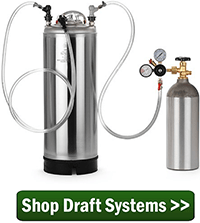 Modified Styles
Modified Styles
These styles will be modified or changed as follows:
- Premium American Lager – split into Standard American Lager and International Pale Lager
- Oktoberfest – traditional (amber) renamed to Marzen, modern (gold) called a festbier
- Rye beer removed from the American wheat category, moved to a Alternative Grains specialty category
- Scottish 60 & 70 combined into Scottish light
- Scottish 80 & 90 combined in to Scottish heavy
- English Brown Ale – formerly northern brown ale, but expanded
- Dry stout split into Irish stout and Irish extra stout
- Tropical stout split from foreign extra stout
- Weizenbock – gold versions allowed
- Fruit lambic – sweetness and carbonation specified, sweet allowed
- Old ale – overlay on new a English strong ale category
Renamed Styles
To reduce confusion, the following style will be renamed:
- Lite American lager > American Light Lager
- Standard American Lager > American Lager
- Dortmunder Export > German Exportbier
- German Pilsner/Pils > German Pils
- Dark American Lager > International Dark Lager
- Schwarzbier (Black Beer) > Schwarzbier
- Maibock/Helles Bock > Helles Bock
- traditional Bock > Dunkles Bock
- Northern German Altbier > rolled into International Amber Lager
- California Common Beer > California Common
- Dusseldorfer Altbier > Altbier
- Standard/Ordinary Bitter > Ordinary bitter
- Special/Best/Premium Bitter > Best Bitter
- Extra Special/Strong Bitter > Strong Bitter
- Strong Scotch Ale > Scottish Wee Heavy
- Mild > Dark Mild
- Brown Porter > English porter
- Robust Porter > American porter
- Imperial IPA > Double IPA
- Weizen/Weissbier > Weissbier
- Dunkelweizen > Dunkels weissbier
- Belgian Specialty Ale > deleted
- Flanders Brown Ale (Oud Bruin) > Oud Bruin
- Straight (unblended) Lambic > Lambic
- Christmas/Winter Specialty > Winter Seasonal Beer
- Classic Rauchbier > Rauchbier
Specialty-Type Beers
The specialty beers will have more specific entry categories, rather than just referencing classic styles. These will have more detailed explanations for what’s allowed.
- Fruit Beer – fruit beer, fruit and spice beer (fruit dominant), specialty fruit beer – with other fermentables
- Spiced Beer – spice/herb/vegetable beers, winter seasonal beer, autumn seasonal beer
- Alternative Fermentables – alternative grain beers, honey beers
- Smoked Beer – Classic style smoked beer, specialty smoked beer
- Wood-Aged Beer – wood-aged beer, specialty wood-aged beer (might include a wine barrel or bourbon barrel)
- Specialty Beer – clone beer, mixed style beer, experimental beer
- Belgian Specialty will get wrapped into Specialty Beer
Updates to Meads and Ciders
- Gave spiced mead its own category
- Added berry mead and stone fruit mead category
- Added fruit and spice mead to spiced mead
- Added historical mead to specialty mead
Cider
- common cider now called new world cider
- added ice cider and cider with Herbs/Spices to Specialty Cider and Perry (to include hopped ciders)
Other Changes
Electronic version of the guidelines will include categorization, as well as a sorting feature of the guidelines so you can re-group styles by similarities.
As you can see, the changes to the BJCP Guidelines are quite extensive! Review Gordon’s slides here and the video presentation here. See the draft guidelines here.
——————————————————————————————————————-
David Ackley is a beer writer, brewer, and self-described “craft beer crusader.” He holds a General Certificate in Brewing from the Institute of Brewing and Distilling and is founder of the Local Beer Blog.
 Hi, I have two one gallon batches of wine going. One is blueberry and the other is muscadine. They both smell and taste soured. What is wrong?
Hi, I have two one gallon batches of wine going. One is blueberry and the other is muscadine. They both smell and taste soured. What is wrong?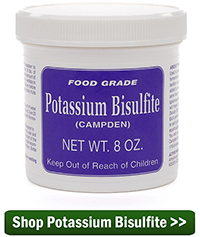 Another reason a homemade wine can start spoiling is if the fermentation is not strong. You can sanitize everything and add sulfites to the wine must before fermenting, but all this is futile if the fermentation does not take off quickly and fully. A wine must that is sitting still for several days is a prime target for being taken over by molds, bacteria and other little nasties that might be floating in the air. The wine must is packed with nutrients and sugar. What more could a contaminant ask for?
Another reason a homemade wine can start spoiling is if the fermentation is not strong. You can sanitize everything and add sulfites to the wine must before fermenting, but all this is futile if the fermentation does not take off quickly and fully. A wine must that is sitting still for several days is a prime target for being taken over by molds, bacteria and other little nasties that might be floating in the air. The wine must is packed with nutrients and sugar. What more could a contaminant ask for?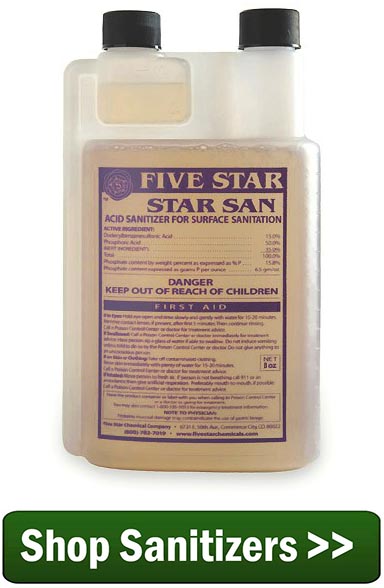 The last thing I’d like to bring up is that your wines may be perfectly fine. If this is your first time making wine, it may be that you have not experience what a fermentation smells and taste like and are just mistaking the usual odors for the wine spoiling. During a fermentation you should be smelling the fruit used to make the wine, but you will often times also experience a sulfur smell from the fermentation — sometimes like a freshly boiled egg. I’m not saying this is what’s going on, I just wanted you to be aware of this.
The last thing I’d like to bring up is that your wines may be perfectly fine. If this is your first time making wine, it may be that you have not experience what a fermentation smells and taste like and are just mistaking the usual odors for the wine spoiling. During a fermentation you should be smelling the fruit used to make the wine, but you will often times also experience a sulfur smell from the fermentation — sometimes like a freshly boiled egg. I’m not saying this is what’s going on, I just wanted you to be aware of this.
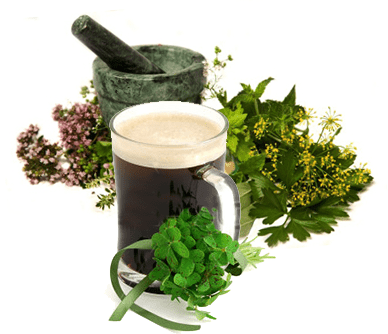 In the modern world of craft beer and homebrew, hops take center stage. Many brewers and drinkers enjoy pushing the limits on just how hoppy a beer can be. But it wasn’t always this way. Before their use became widespread, hops were actually frowned upon in favor of the wide range of herbs and spices that were used to flavor beer. These herbed beers of antiquity are known as gruit.
In the modern world of craft beer and homebrew, hops take center stage. Many brewers and drinkers enjoy pushing the limits on just how hoppy a beer can be. But it wasn’t always this way. Before their use became widespread, hops were actually frowned upon in favor of the wide range of herbs and spices that were used to flavor beer. These herbed beers of antiquity are known as gruit.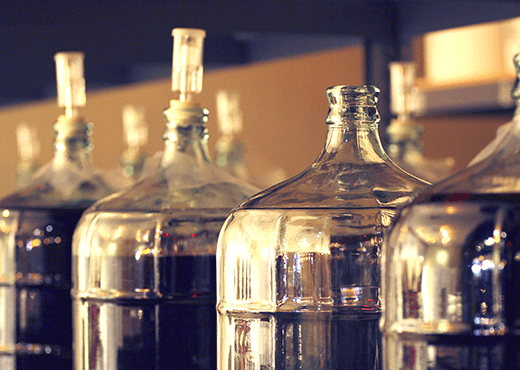 When winemaking gets left on the back burner….
When winemaking gets left on the back burner….
 My name is Leigh Erwin, and I am a brand-spankin’ new home winemaker! E. C. Kraus has asked me to share with you my journey from a first-time dabbler to an accomplished home winemaker. From time to time I’ll be checking in with this blog and reporting my experience with you: the good, bad — and the ugly.
My name is Leigh Erwin, and I am a brand-spankin’ new home winemaker! E. C. Kraus has asked me to share with you my journey from a first-time dabbler to an accomplished home winemaker. From time to time I’ll be checking in with this blog and reporting my experience with you: the good, bad — and the ugly. If you attended the National Homebrewers Conference in Grand Rapids, you may have heard that the
If you attended the National Homebrewers Conference in Grand Rapids, you may have heard that the 

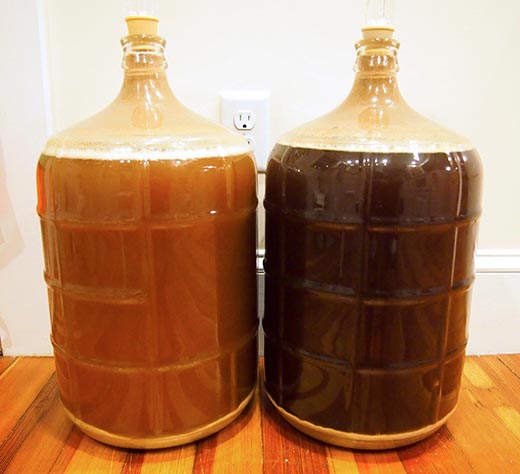 Hi there, I have to say, thank you for the amazing site. It’s been a wealth of knowledge… I will hopefully be moving cross country in the next few months. Currently I have two wines I am in the process of making… My questions are what would be the best way to transport a possibly bulk fermenting wine? If they are done fermenting am I safe to degas the wines, then plug the carboys and move or should I add something to either of them? As a side note, I do plan on making crates to protect the carboys…
Hi there, I have to say, thank you for the amazing site. It’s been a wealth of knowledge… I will hopefully be moving cross country in the next few months. Currently I have two wines I am in the process of making… My questions are what would be the best way to transport a possibly bulk fermenting wine? If they are done fermenting am I safe to degas the wines, then plug the carboys and move or should I add something to either of them? As a side note, I do plan on making crates to protect the carboys… Hi everyone!
Hi everyone!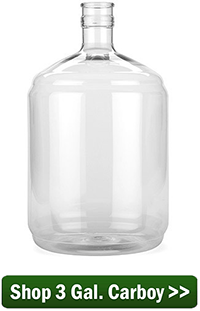
 My name is Leigh Erwin, and I am a brand-spankin’ new home winemaker! E. C. Kraus has asked me to share with you my journey from a first-time dabbler to an accomplished home winemaker. From time to time I’ll be checking in with this blog and reporting my experience with you: the good, bad — and the ugly.
My name is Leigh Erwin, and I am a brand-spankin’ new home winemaker! E. C. Kraus has asked me to share with you my journey from a first-time dabbler to an accomplished home winemaker. From time to time I’ll be checking in with this blog and reporting my experience with you: the good, bad — and the ugly.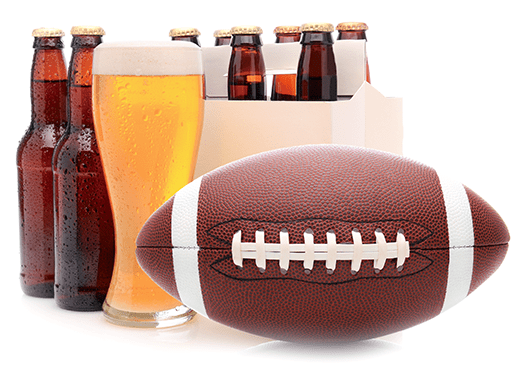 Just like apple pie, baseball and Cracker Jacks, and mac & cheese, beer and football is a classic combination. For football season you need something you can drink over the course of a three-hour game, a tasty
Just like apple pie, baseball and Cracker Jacks, and mac & cheese, beer and football is a classic combination. For football season you need something you can drink over the course of a three-hour game, a tasty  I have been thinking about a way to protect wine from unnecessary oxidation during 2nd and 3rd rackings. Mainly, I want to get the oxygen out of the empty carboy before racking into it, but how?
I have been thinking about a way to protect wine from unnecessary oxidation during 2nd and 3rd rackings. Mainly, I want to get the oxygen out of the empty carboy before racking into it, but how? 
